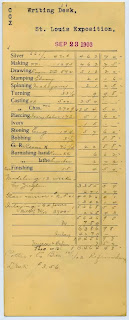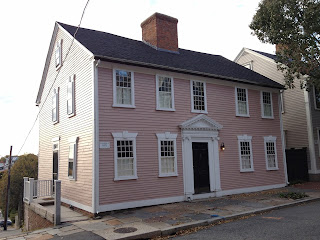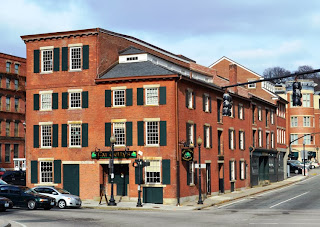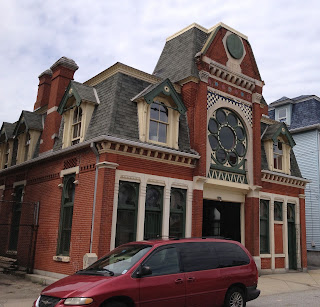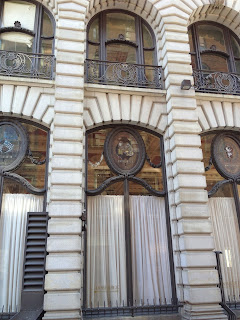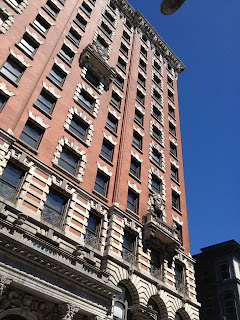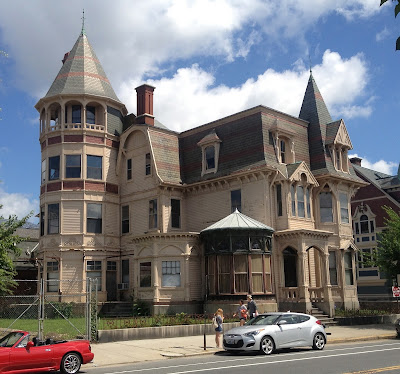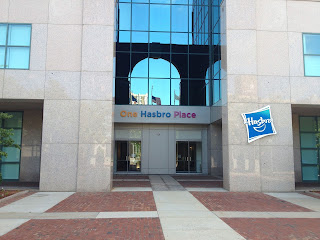Interestingly enough, both of their sons took over their roles--John Holbrook as president and William Codman as chief designer. John had been a VP for 13 years when his father died, but he was a disaster as president, and the company went through five presidents between 1919-1923 before Edmund Mayo took over the reins.
William Codman was well-trained in academic styles, but was not a fan of "modern" design, which was being demanded by the public. Codman's opinion of modern design an be summed up in his 1929 book on the History of Silverware Design:
Recently, a style so called "Modern" has been introduced to the public, but it does not appear to have made much headway. . . . If we see elements of the Greek, the Gothic, or more of the Italian Renaissance in our silverware, let us be thankful our designers have the good sense to value the best in the past.Codman stayed on at Gorham as chief designer into the 1930s, but Mayo took some steps to reduce his influence. One of the things he did was to bring in Erik Magnussen, a Danish modernist silversmith, who worked as a designer at Gorham, independent of Codman, from 1925-1929. His official title was "Designer (Special Work)".
 |
| Erik Magnusson coffee service, 1929. |
This set was radical, even for Magnusson. It was exhibited a number of times, and was pictured in the New York Times where it was named "The Lights and Shadows of Manhattan." It is currently on permanent display at the RISD Museum.
When the depression hit, production slowed significantly, though Gorham kept their artisans working--they meticulously produced hundreds of examples of 19th century hollowware from original designs and dies. Today these pieces are the only known examples of certain Gorham patterns.
After the attack on Pearl Harbor, the company stopped making bronze and brass goods, all plated wares, and most church goods. Hollowware production was cut by 70%, and sterling flatware was limited to six-piece place settings in 13 patterns.
More than 30 kinds of war materiel were manufactured at the Gorham plant during the war, including millions of 40mm shell casings, small arms parts, tank bearings, and torpedo components.
In the 1950s and 1960s, Gorham embarked on an acquisition program to expand their lines and diversify. They acquired silver and bronze companies, as well as companies in other industries. By the middle 1960s they were cash rich, with 2,400 employees and $40 million in sales. They were a prime candidate for a takeover, so in 1967 they merged with Providence company Textron, whom they'd approached as a "safe haven."
By 1985, due to a variety of causes such as rising silver prices and reduced demand, and possibly a lack of focus due to their wide product lines, Gorham had shrunk significantly in size. Textron therefore relocated manufacturing from the Providence plant to a Smithfield, RI facility, where it remained until 1992, when it moved out of state.
Textron sold Gorham in 1988. Since 2007, the sterling silver patterns have been made by Lifetime Brands, who also own the Wallace and Towle Silversmiths names. They still produce 19 patterns of flatware, including Chantilly, which has been made continually since 1885! Gorham stainless steel flatware is manufactured by Lenox Brands.
The site on which the Gorham plant stood was acquired by the City of Providence in 1990. Serious concerns were raised about the site's environmental safety, and it was named a "superfund" brownfields site in 1995.
Providence was unable to interest developers in the Gorham plant buildings, so all (except the Carriage House) were demolished in 1997. The City built Alvarez High School on part of this site; it opened in 2008.
 |
| Location of Alvarez High School, on former site of Gorham plant. |
Illustration Credits and References
Photo of Magnusson coffee service by the author.
Providence Journal, "Fire destroys carriage house that was to become fire museum," by Maria Armental, April 15, 2009.
An exhaustive history of Gorham can be found in the book Gorham Silver by Charles H. Carpenter, Jr. (Revised edition published 1997 by Alan Wofsy Fine Arts, San Francisco.)



